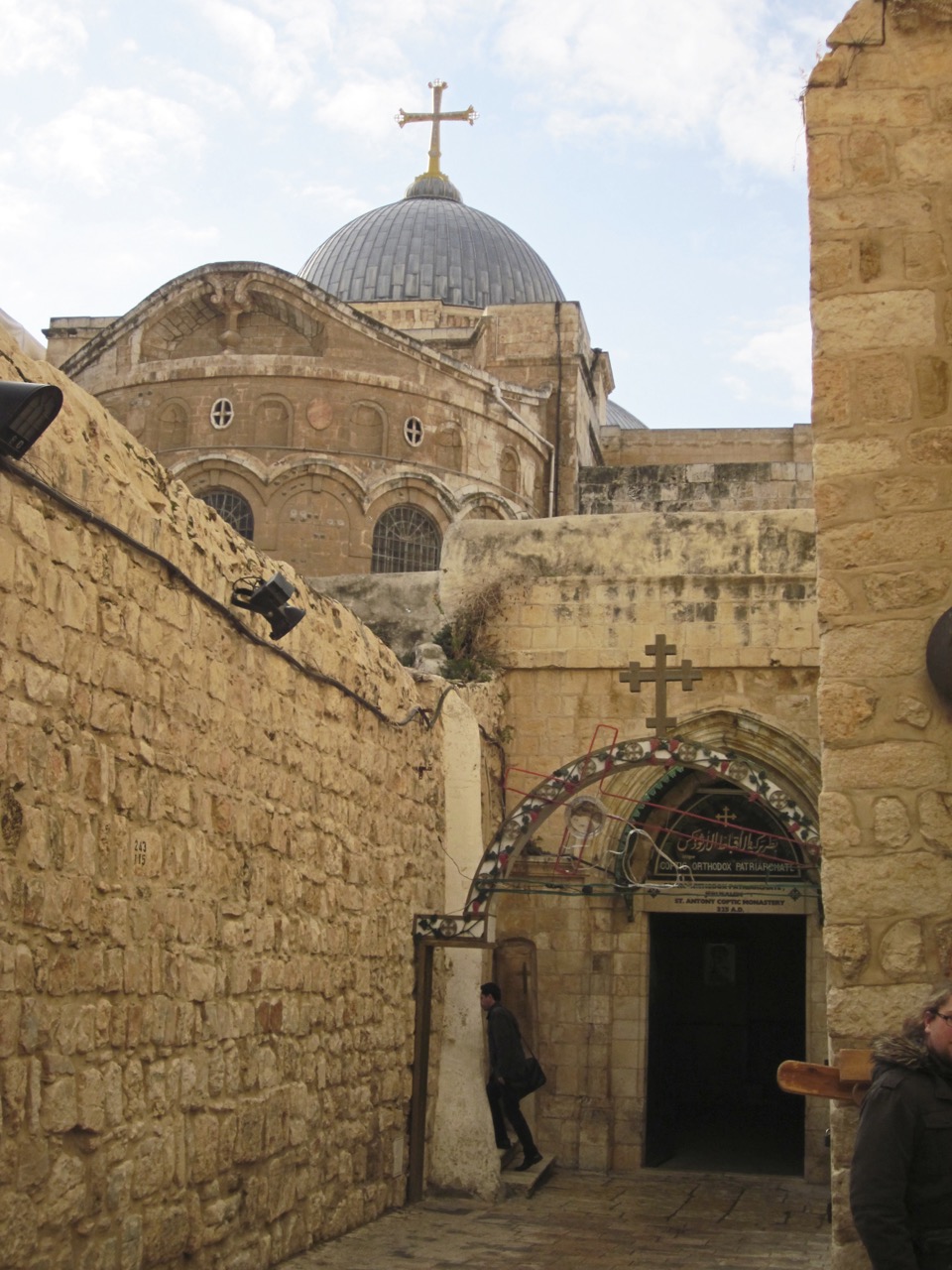
View from the east
02/01/2012 | © 2012 TuK Bassler – CC-BY-SA 4.0
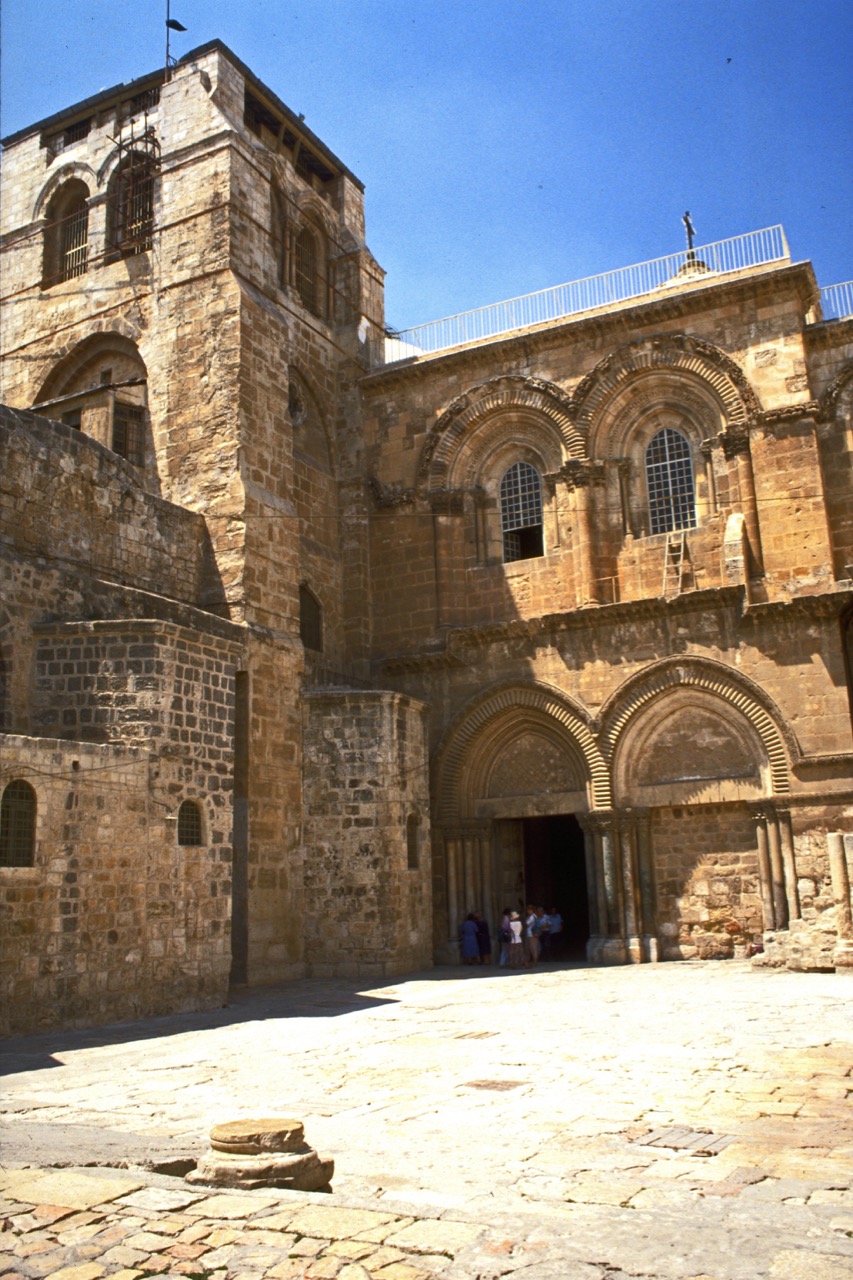
Entrance façade on the south side
20/08/1991 | © 1991 TuK Bassler – CC-BY-SA 4.0
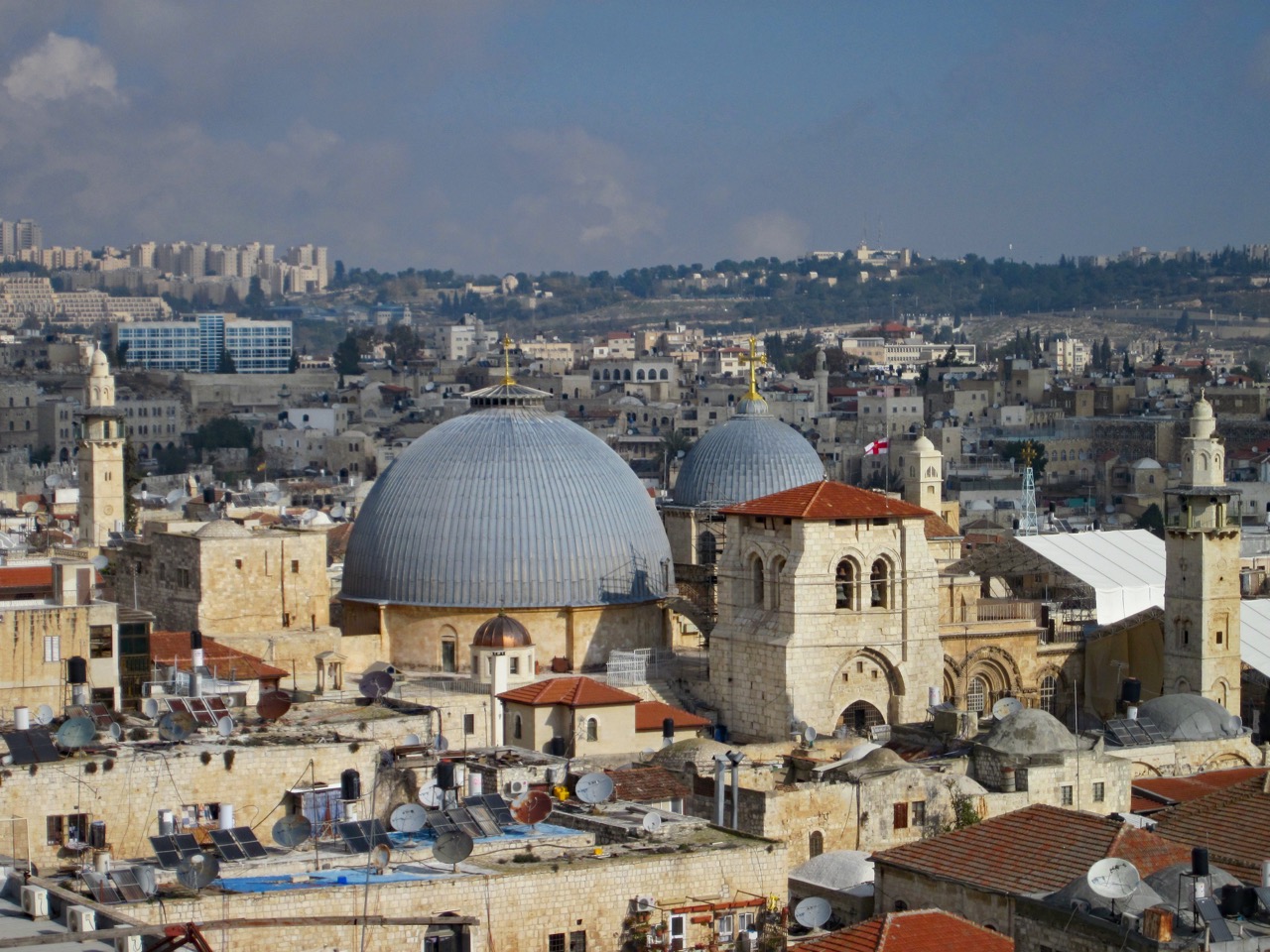
View from the south west (from the Tower of David)
02/01/2012 | © 2012 TuK Bassler – CC-BY-SA 4.0
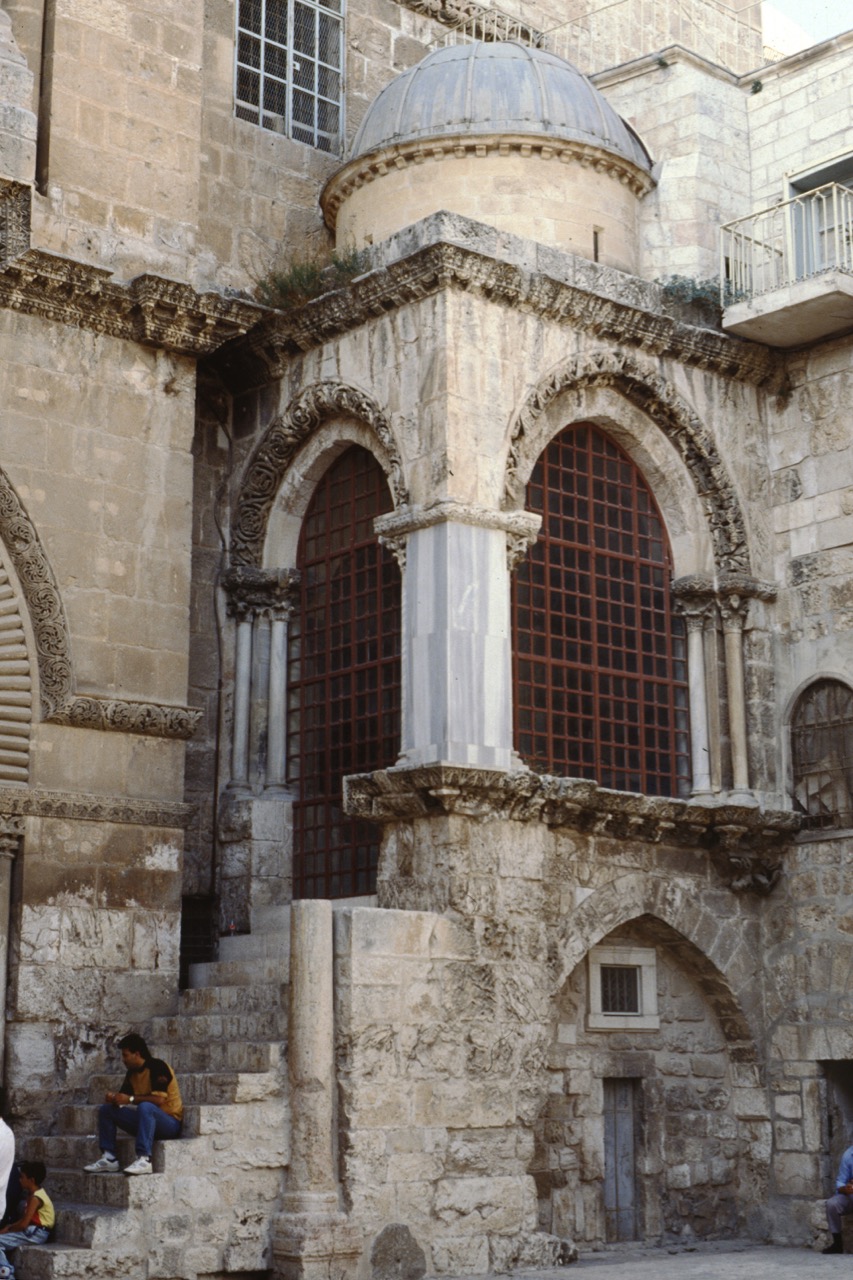
Chapel of the Franks adjacent to the main portal
26/08/1992 | © 1992 TuK Bassler – CC-BY-SA 4.0
Previous
Next
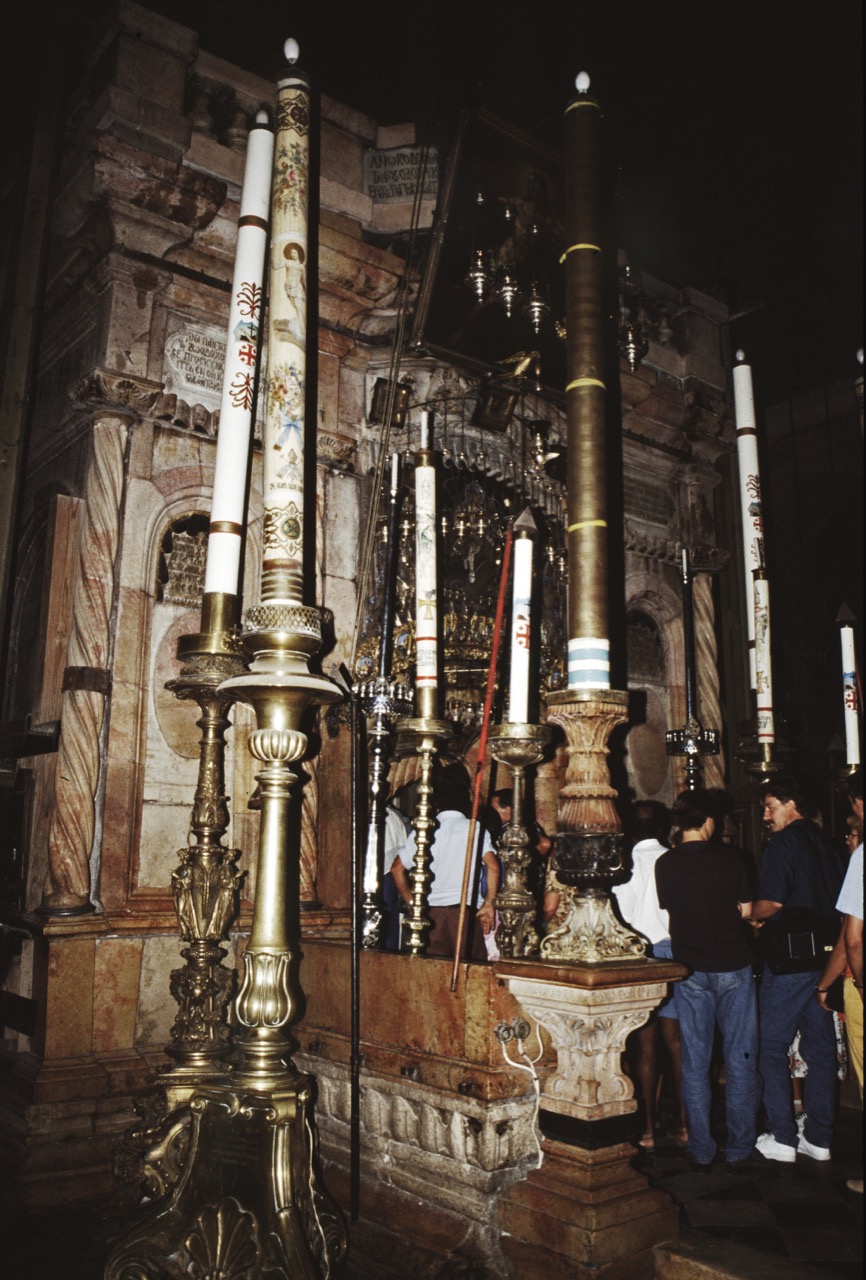
Aedicule (Chapel of the Sepulchre)
26/08/1992 | © 1992 TuK Bassler – CC-BY-SA 4.0
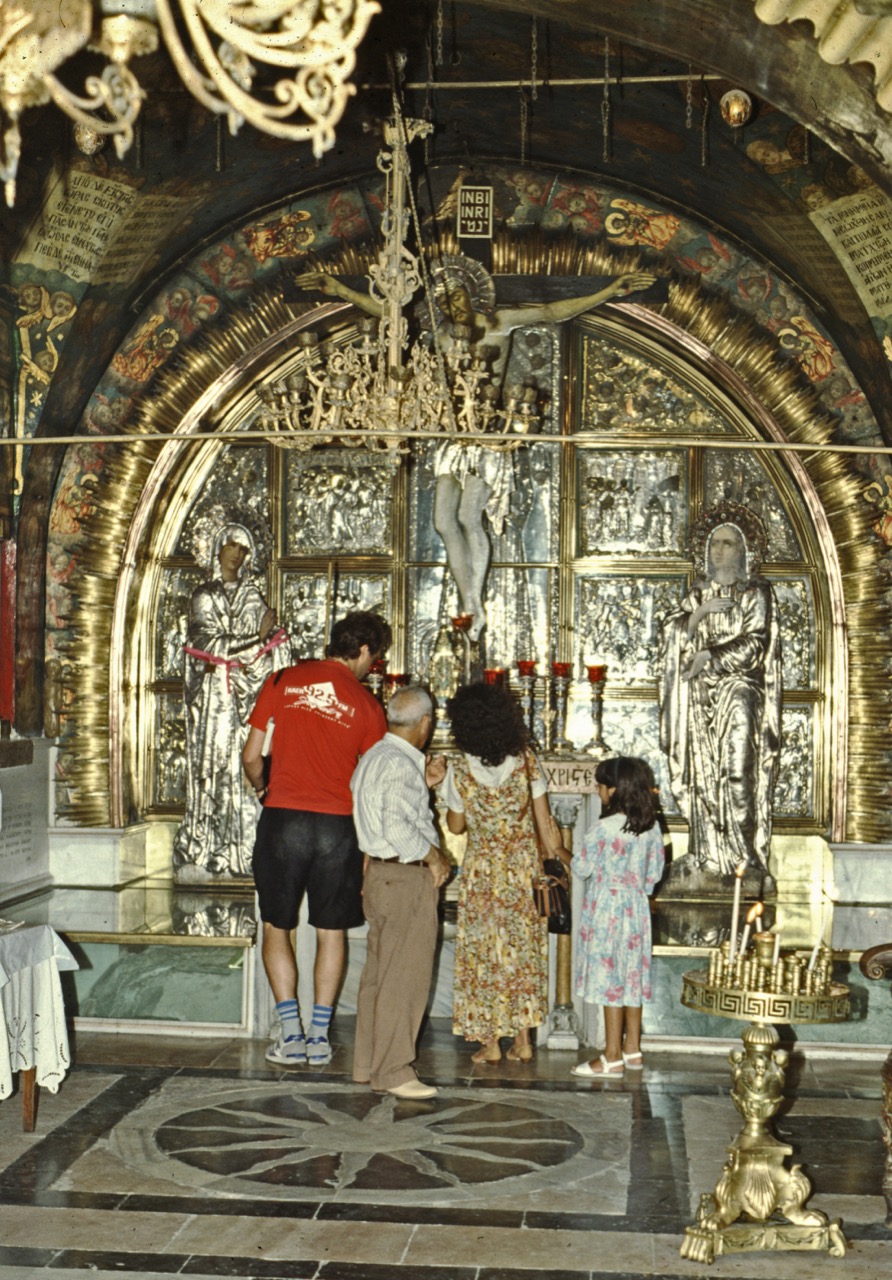
Greek Orthodox altar of the Crucifixion on the rock of Golgota
20/08/1991 | © 1991 TuK Bassler – CC-BY-SA 4.0
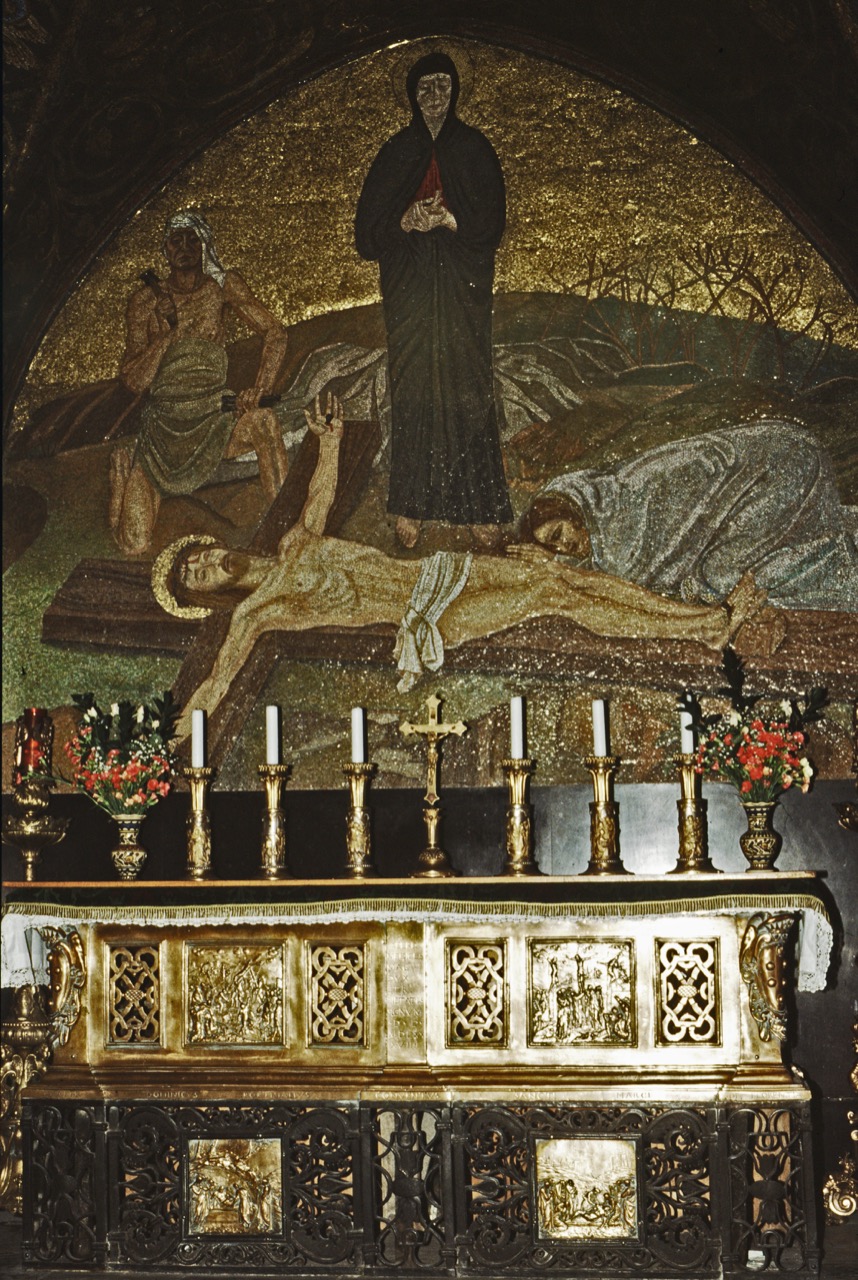
Roman Catholic altar of the Nailing of the Cross on the rock of Golgota
20/08/1991 | © 1991 TuK Bassler – CC-BY-SA 4.0
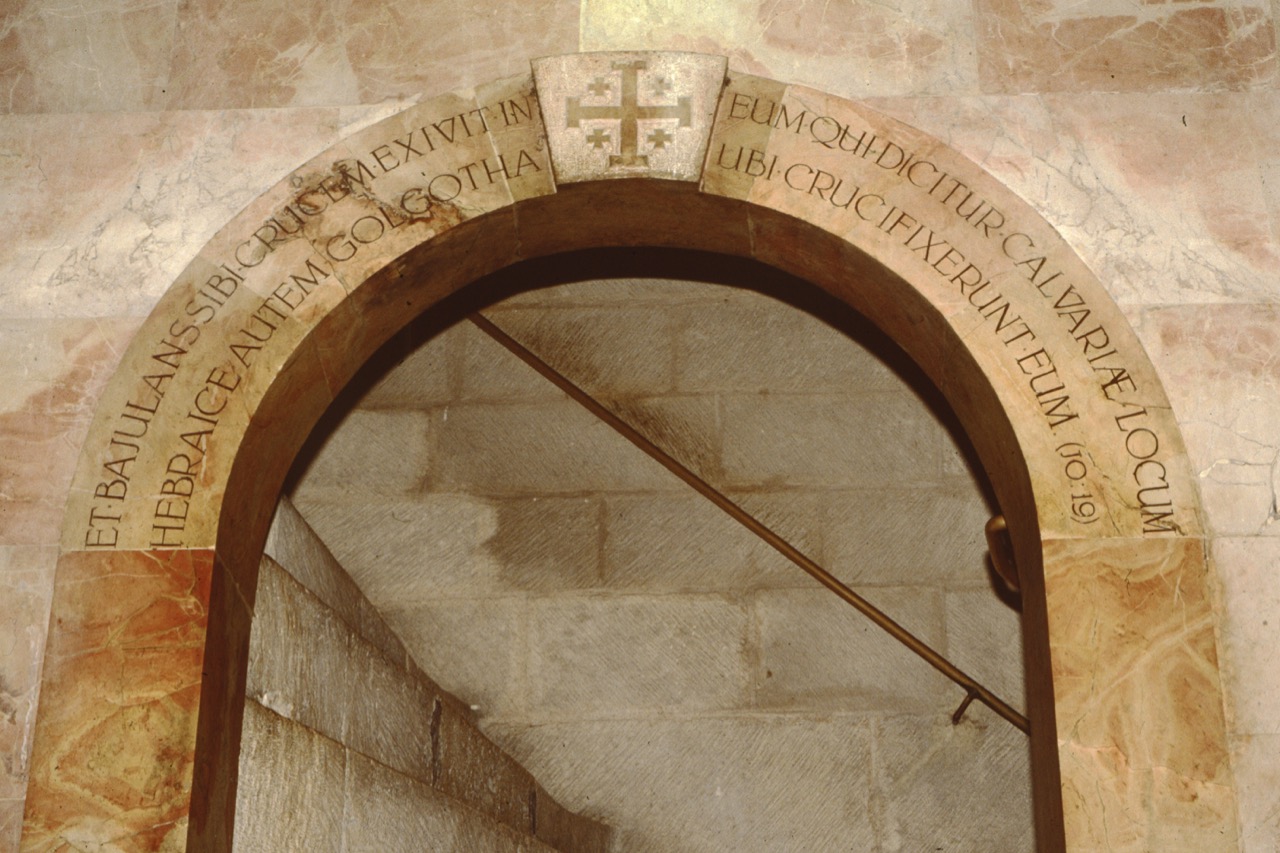
Stairway to the rock of Golgota
20/08/1991 | © 1991 TuK Bassler – CC-BY-SA 4.0
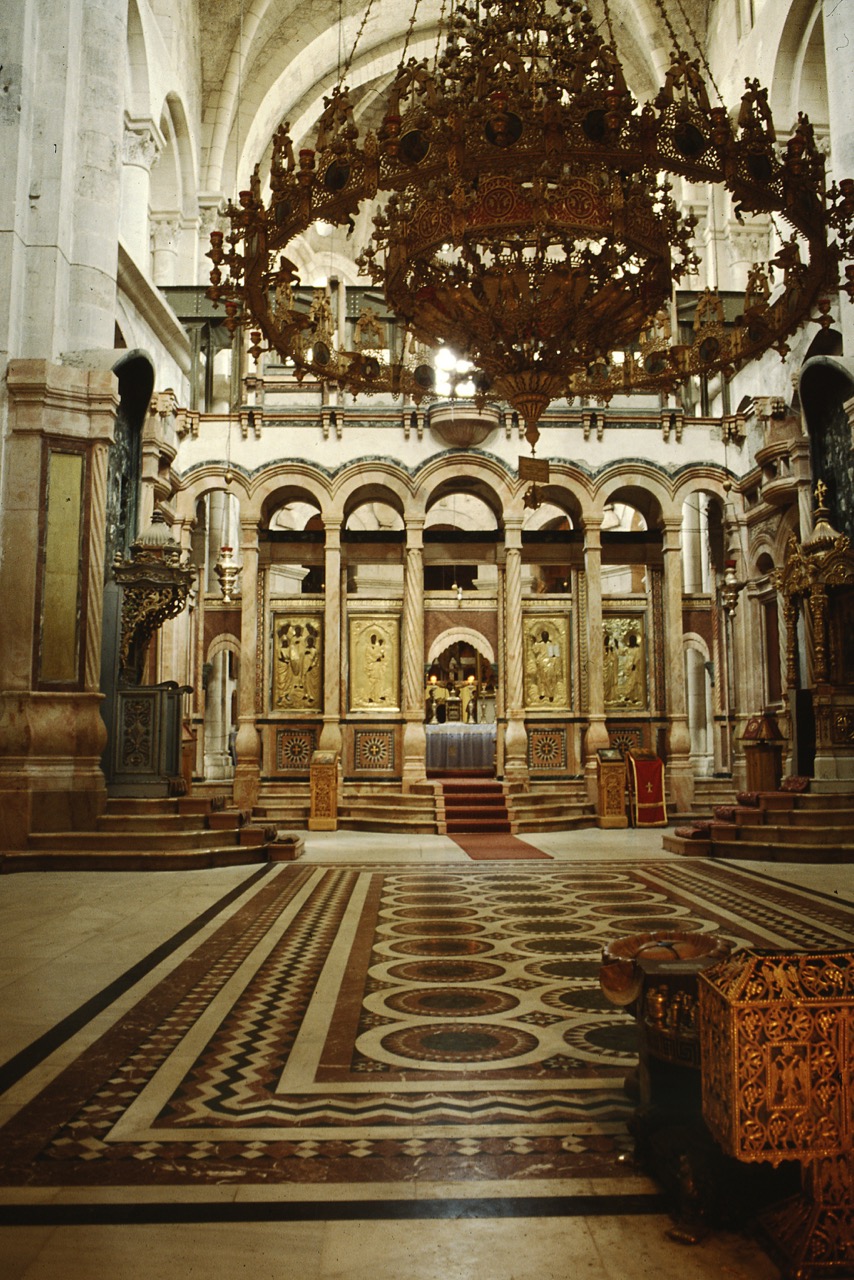
Catholicon (nave of the basilica)
20/08/1991 | © 1991 TuK Bassler – CC-BY-SA 4.0
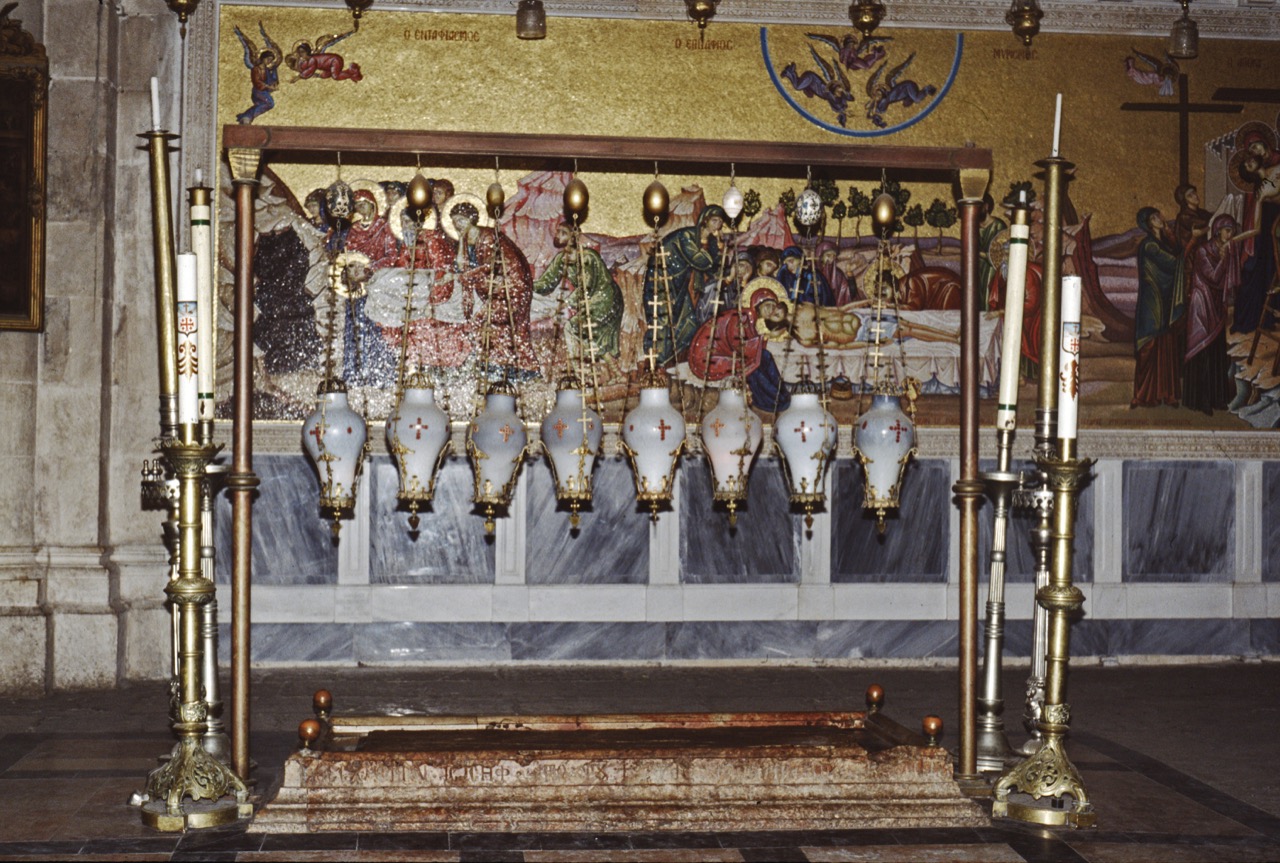
Stoine of Anointing
26/08/1992 | © 1992 TuK Bassler – CC-BY-SA 4.0
Previous
Next